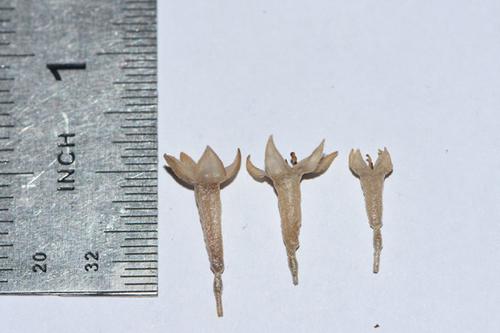当前位置:
X-MOL 学术
›
J. Syst. Evol.
›
论文详情
Our official English website, www.x-mol.net, welcomes your feedback! (Note: you will need to create a separate account there.)
Altitude-related shift of relative abundance from insect to sunbird pollination in Elaeagnus umbellata (Elaeagnaceae)
Journal of Systematics and Evolution ( IF 3.7 ) Pub Date : 2020-09-17 , DOI: 10.1111/jse.12685 Hua‐Qiang Pi 1 , Qiu‐Mei Quan 2 , Bo Wu 3 , Xiao‐Wen Lv 1 , Li‐Min Shen 4 , Shuang‐Quan Huang 1
Journal of Systematics and Evolution ( IF 3.7 ) Pub Date : 2020-09-17 , DOI: 10.1111/jse.12685 Hua‐Qiang Pi 1 , Qiu‐Mei Quan 2 , Bo Wu 3 , Xiao‐Wen Lv 1 , Li‐Min Shen 4 , Shuang‐Quan Huang 1
Affiliation

|
The evolution of floral traits has been thought to be influenced by local, effective pollinators. However, little attention has been paid to the possibility that altitudinal variation in floral traits could be mediated by local pollinator functional groups, particularly a shift from bees to birds. Plant size, floral traits, pollinators and their pollination roles were investigated in the spring-flowering shrub Elaeagnus umbellata (Elaeagnaceae) at three altitudes (1160, 1676, and 2050 m) in Minshan, Sichuan Province, on the northern rim of the Hengduan Mountains, southwest China. Compared to lower altitudes, higher-altitude plants were smaller but the floral tubes were longer, with a larger volume of nectar of lower sugar concentration but with a greater proportion of sucrose. The visitation frequency of bees decreased with altitude, whereas the sunbirds did the opposite. Birds and bees foraged for nectar but not pollen, and birds deposited more pollen grains per visit relative to bees and least were syrphid flies. Excluding birds decreased seed set at high but not at mid- or low altitude. Our study of E. umbellata revealed an association between altitudinal variation in floral traits and a change in the relative abundance of the major pollinators with altitude from majority bees to majority sunbirds. Although abiotic factors also tend to vary with altitude and can affect floral traits, nectar properties of “pro-bird” pollination were observed at high altitude.
更新日期:2020-09-17



























 京公网安备 11010802027423号
京公网安备 11010802027423号